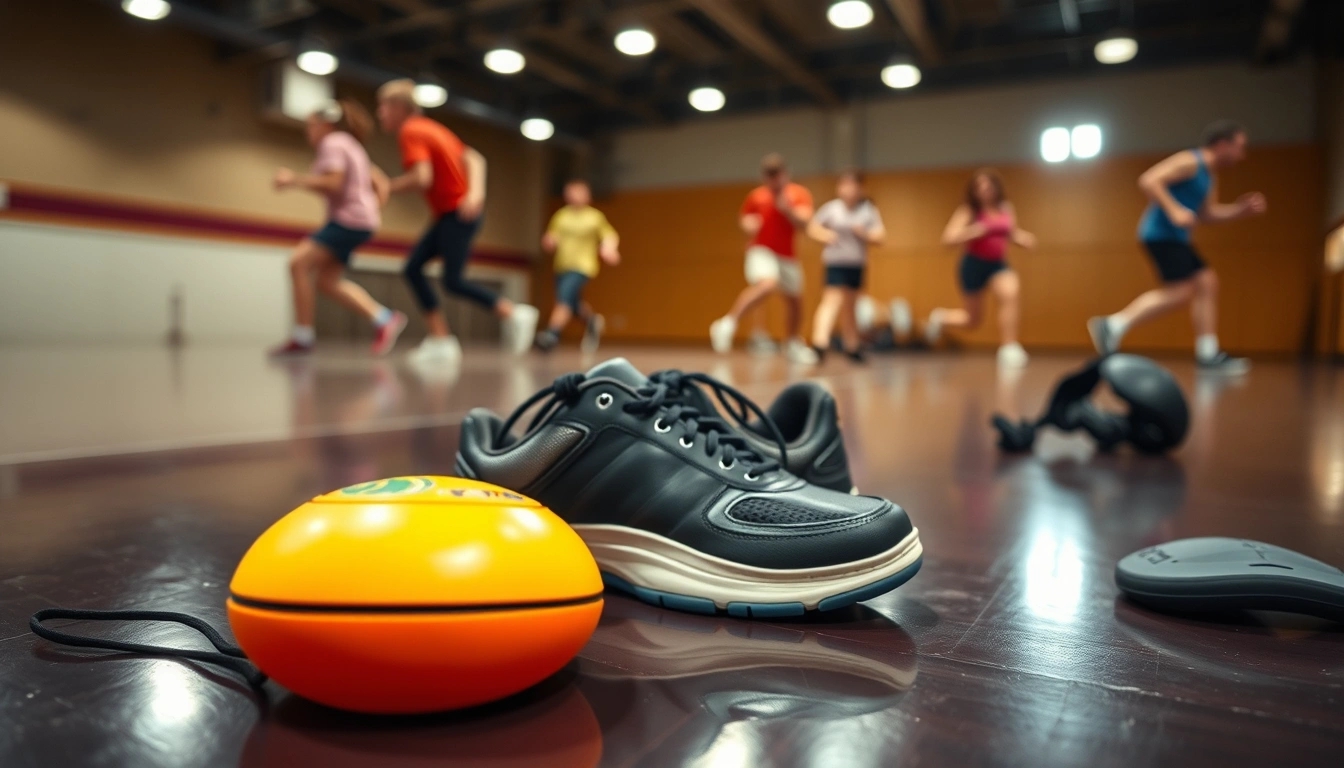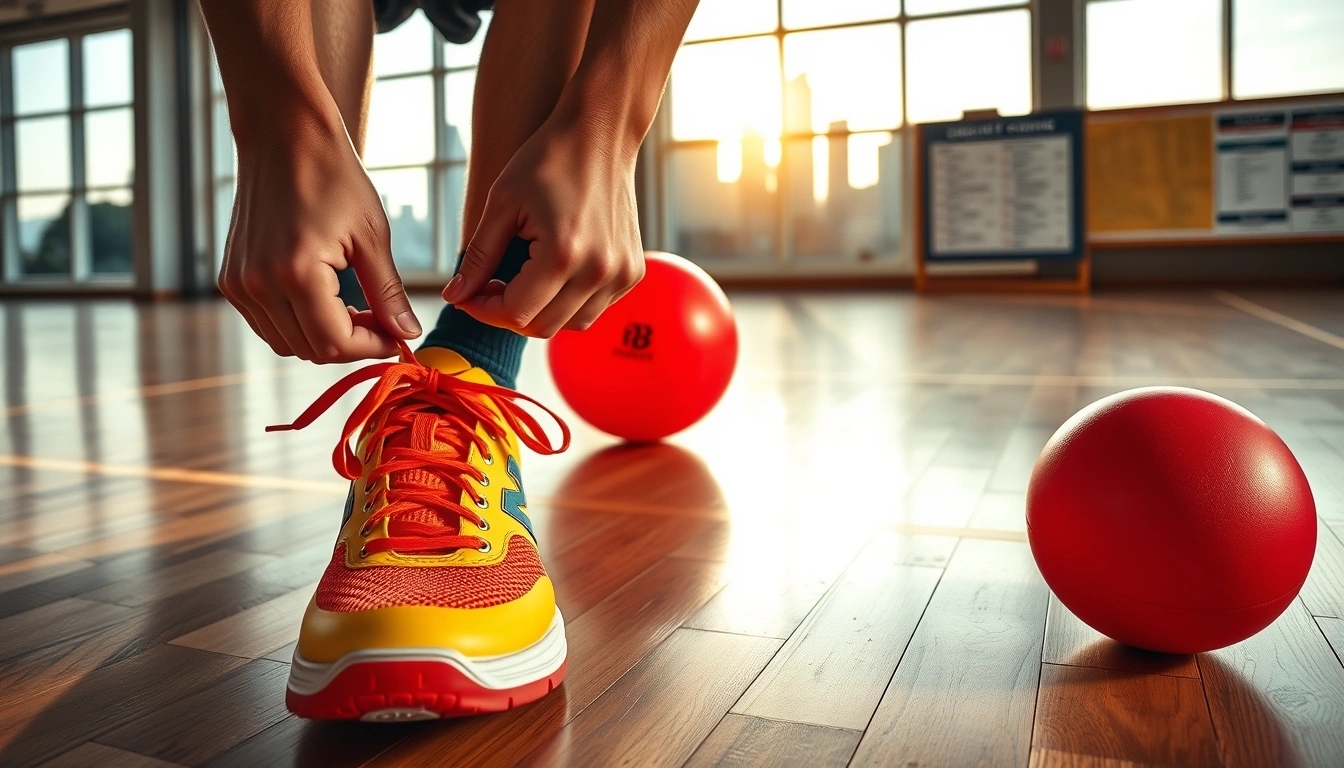So, you’re thinking about diving headfirst into the chaotic, fast-paced, and downright hilarious world of dodgeball? Good on ya! Dodgeball isn’t just a kids’ playground game anymore — it’s a legit sport with leagues popping up all over the UK, and trust me, it’s way more fun (and sweaty) than you’d expect. But before you start practicing your “duck and weave” moves in your living room, here’s a straight-talking, no-BS guide to getting yourself onto a dodgeball team near you.
First off, don’t panic if you don’t know where to begin. Dodgeball scenes in UK cities vary — some places have well-organized leagues with regular fixtures and proper kits, while others are more casual, weekend warrior affairs. The key is to figure out what kind of vibe you want. Are you after serious competition, or just a laugh with some mates? Either way, there’s something for everyone.
| League Type | Description | Typical Cost |
|---|---|---|
| Competitive | Structured, regular matches, often with rankings and tournaments. | £30-£50/month |
| Social | Casual, fun-focused, great for beginners and making friends. | £10-£20/session |
| University Clubs | Student-only, combines social and competitive play. | Usually included in student fees |
Now, how do you actually find these leagues? Your best bet is the internet. Websites like Meetup, Facebook groups, or even local community centers often list dodgeball events. Don’t underestimate the power of asking around either — word of mouth can lead you to some hidden gems. And if you’re feeling brave, just rock up to a local sports hall during dodgeball night and ask if you can join in. Most groups are super welcoming.
- Pro tip: Join social media groups dedicated to dodgeball in your city. They’re goldmines for updates, tips, and sometimes last-minute team needs.
- Another tip: Don’t be shy to sign up solo. Many leagues are used to new players flying solo and will slot you into a team or help you find one.
When you finally get to your first practice, expect a mixed bag of nerves, laughter, and probably a few bruises. Dodgeball is all about dodging, catching, and throwing — but also about having a laugh when you inevitably get nailed by a ball. Bring comfy sports gear, trainers, and maybe some water because you’ll sweat buckets. And hey, don’t worry if you’re rubbish at first — everyone was once.
Essential Gear Checklist:- Comfortable sportswear- Trainers with good grip- Water bottle- Optional: Knee pads or elbow guards- A positive attitude (non-negotiable!)
One last thing — be ready to pay a few quid. Leagues usually charge fees to cover hall hire, equipment, and sometimes coaching. It’s rarely expensive, but knowing what you’re signing up for helps avoid those awkward “Wait, I need to pay?” moments.
So there you have it — a quick and dirty guide to jumping into dodgeball leagues across the UK. It’s messy, it’s fun, and it’s a brilliant way to meet people while getting some serious cardio. Now, go on, get out there and dodge like your life depends on it!
Understanding the dodgeball scene in the UK
So, you’ve heard the buzz about dodgeball and wonder why it’s suddenly everywhere in the UK, right? Well, buckle up because this sport’s journey from dodgy schoolyard pastime to a nationwide craze is a bit of a wild ride. First off, dodgeball isn’t just kids chucking balls at each other anymore — it’s a legit, organized sport with a surprisingly vibrant community behind it. From grassroots clubs popping up in local halls to full-blown competitive leagues that take things seriously (like, really seriously), dodgeball has carved out a niche that’s growing faster than you can say “duck!”
- Grassroots clubs: These are your local gems. Often run by enthusiastic volunteers or former players, these clubs are the heart and soul of dodgeball in the UK. They’re where newbies get their first taste of the game, and where community spirit is as important as the scoreline.
- Competitive leagues: For those who want to kick it up a notch, competitive leagues offer a more structured, intense environment. Expect regular fixtures, rankings, and yes, the occasional heated rivalry that makes the matches more than just a bit exciting.
You might be wondering why dodgeball is blowing up now. Well, it’s got that perfect storm of factors: it’s fast-paced, social, and ridiculously fun. Plus, it’s easy to get into without needing a ton of gear or prior skills. The rise of social media and online communities has also played a massive role, connecting players and leagues across the UK like never before. Suddenly, it’s not just a schoolyard game; it’s a sport with a real following.
| Aspect | Description | Why it matters |
|---|---|---|
| Accessibility | Low entry barriers, minimal equipment needed | Encourages wide participation across ages and skill levels |
| Community | Friendly clubs and leagues fostering social connections | Builds lasting friendships and local networks |
| Competition | Organized leagues with rankings and tournaments | Keeps the sport exciting and motivates skill improvement |
| Media presence | Social media groups, live streams, and event coverage | Boosts visibility and attracts new players |
But hey, it’s not all sunshine and rainbows. The dodgeball scene still faces some hurdles: inconsistent rules across leagues, limited funding, and sometimes a bit of a “boys’ club” vibe that can put off newcomers. However, the community is working hard to iron out these issues, making it more inclusive and welcoming by the day.
If you’re thinking about dipping your toes in, it helps to know that dodgeball in the UK is as much about having a laugh and meeting people as it is about dodging those balls like a ninja. Whether you want to join a casual weekly club or aim for the national championships, there’s a spot for you somewhere in this growing scene.
Quick tips for newbies:- Don’t sweat the rules too much at first — focus on fun.- Find your local club via social media or community boards.- Gear up with comfy trainers and shorts; dodgeball’s fast and furious.- Expect to get hit — it’s part of the charm!- Remember, the best players are the ones who keep smiling (even when they get nailed).
So yeah, dodgeball in the UK is on the up and up. It’s messy, energetic, and downright addictive once you get a taste. Ready to join the dodgeball revolution? Just remember: it’s less about dodging life’s curveballs and more about throwing yourself into the madness with a grin.
Finding local dodgeball leagues near you
So, you’re itching to throw some balls, dodge like your life depends on it, and maybe even score a few victories in a dodgeball league around your city. But where on earth do you start? Well, buckle up, because tracking down a dodgeball league isn’t always as simple as just googling “dodgeball near me” and hoping for the best. It’s a bit of a treasure hunt, and sometimes you gotta dig through some unexpected places to find the gold. Here’s the lowdown on how to sniff out those dodgeball leagues hiding in plain sight.
- Online Resources: The Obvious Starting Point
The internet is your best mate here, no doubt. Websites like Meetup.com often have dodgeball groups popping up, especially in bigger UK cities like London, Manchester, or Birmingham. Also, don’t overlook local sports centres’ websites and community bulletin boards online — they sometimes post league schedules and sign-up info. Google searches with your city name plus “dodgeball league” can bring up some gems, but be prepared to sift through a fair bit of noise. - Social Media Groups: The Modern-Day Noticeboard
Facebook groups and pages dedicated to dodgeball are surprisingly active. Join groups like “UK Dodgeball Players” or city-specific ones like “Leeds Dodgeball Community.” These groups are goldmines for announcements, casual games, and even last-minute player calls. Twitter and Instagram can also help — just search hashtags like #DodgeballUK or #[YourCity]Dodgeball. You might even stumble on some cheeky memes to keep the vibe light. - Word-of-Mouth: The Old-School Secret Weapon
Never underestimate the power of chatting to people. Ask around at your gym, university, or local sports clubs. Sometimes dodgeball leagues are small and community-run, so they don’t always advertise widely. A quick chat with a gym receptionist or a coach might lead you straight to the right person.
| Resource Type | Where to Look | What You’ll Find |
|---|---|---|
| Online Platforms | Meetup, local sports centre websites, Google | League schedules, sign-up forms, event details |
| Social Media | Facebook groups, Instagram hashtags, Twitter | Community chats, casual games, player recruitment |
| Word-of-Mouth | Gyms, universities, sports clubs | Hidden leagues, insider tips, direct contacts |
Now, here’s a cheeky tip: dodgeball is still growing in the UK, so some leagues don’t have fancy websites or slick marketing. They rely on community buzz and word spreading like wildfire. So don’t be shy, get out there and ask around. You might just find yourself invited to a game through a random acquaintance or a mate of a mate.
Also, keep your eyes peeled for local sports festivals or charity events — dodgeball often features in these, and they’re perfect places to meet players and organisers. Once you’re in the loop, joining a league becomes way easier.
To wrap it up, finding a dodgeball league is less about a single magic website and more about mixing online stalking, social media lurking, and good old-fashioned chatting. And if you’re lucky, you’ll find a group that suits your style, skill level, and maybe even your sense of humour. Because let’s face it, dodgeball’s as much about having a laugh as it is about dodging balls like a ninja.
Quick checklist to start your dodgeball hunt:
- Search Meetup and local sports websites weekly
- Join and follow relevant Facebook groups and hashtags
- Ask gym staff and sports coaches for leads
- Attend local sports events and charity games
- Keep your phone handy for last-minute game invites
Good luck, and may your dodges be swift and your throws deadly!

What to expect at your first dodgeball practice
So, you’ve decided to give dodgeball a whirl, huh? Good on ya! But before you step onto that court and get plastered with flying balls, let’s have a little chat about what your first practice might actually feel like. Spoiler alert: it’s probably gonna be a mix of excitement, confusion, and the odd moment of “what on earth am I doing here?” But don’t sweat it — everyone’s been there.
First off, nerves will hit you like a rogue dodgeball. You might find yourself wondering if you’re the slowest runner or the worst thrower in the room. Truth? You probably are — at least at first. But hey, everyone starts somewhere, and trust me, the vets on the team were once the rookies who couldn’t catch a ball to save their lives.
Expect the warm-up to be a bit chaotic. Coaches or team captains will have you doing some basic drills — dodging side to side, catching, throwing, and maybe the dreaded “shuttle runs.” It’s not about being perfect; it’s about getting your body moving and your brain wrapped around the game’s pace. You’ll be surprised how quickly you get sucked into the action.
| Common First Practice Activities | Why They Matter |
|---|---|
| Warm-up stretches and jogging | Prevents injuries and gets blood pumping |
| Basic throwing and catching drills | Builds fundamental skills for gameplay |
| Dodging exercises | Teaches quick reflexes and movement |
| Mini scrimmages | Applies skills in a fun, low-pressure setting |
Now, don’t expect to be a star player straight away. In fact, you’ll probably spend a fair bit of time on the sidelines, catching your breath or watching others’ moves. That’s totally normal. Use this time to observe, soak in the rules, and maybe pick up a few tips from teammates. Dodgeball isn’t just about muscle; it’s about strategy and timing — and those take time to get right.
Here’s a quick survival guide for your first practice:
- Wear comfy sports gear. You don’t need fancy kit, but make sure you can move freely.
- Bring water. You’ll be sweating buckets.
- Don’t be shy. Ask questions if you’re confused — everyone loves a keen newbie.
- Laugh at yourself. You’ll probably miss catches or get hit a lot. It’s part of the fun.
And hey, if you find yourself ducking behind a teammate or accidentally throwing a ball at the ceiling (been there, done that), just remember: it’s all part of the learning curve. Dodgeball is fast, furious, and sometimes flat-out bonkers — but that’s what makes it so addictive.
Finally, remember that the social side of practice is just as important as the game itself. Chat with your teammates, share a few laughs, and maybe swap embarrassing stories about your first-ever dodgeball fail. You’re not just joining a league; you’re joining a community.
So, take a deep breath, grab that ball, and get ready to dive in. Your first dodgeball practice won’t be perfect — but it’ll definitely be memorable.
Essential gear and kit for beginners
Jumping into dodgeball without the right gear is like trying to play football in flip-flops — you can do it, but it’s not pretty, and you’ll regret it fast. Now, before you start imagining a full-on sports shop haul that’ll empty your wallet, relax. You don’t need to break the bank, but there are a few basics that are absolutely non-negotiable if you want to survive your first game without looking like a lost puppy. Here’s the lowdown on what you should bring or buy before you hit the court.
- Comfortable sportswear: This isn’t a fashion show, but you do want to be able to move freely. Think breathable t-shirts and shorts or leggings. Avoid anything too baggy that might get snagged or restrict your dodging skills.
- Proper trainers: This one’s crucial. You need shoes with good grip and support — running shoes or cross-trainers work perfectly. Forget your old school kicks or, heaven forbid, your casual sneakers. Slipping on the court is a fast track to embarrassment or worse, injury.
- Knee pads (optional but recommended): If you’re the cautious type or planning to get down and dirty with dives and slides, knee pads can be lifesavers. They’re not mandatory, but trust me, your knees will thank you later.
- Dodgeballs: Most leagues provide these, but some might ask you to bring your own. Usually, they’re foam balls, safe enough to throw without turning the game into a battlefield.
Now, if you’re wondering about fancy stuff like gloves, wristbands, or headbands — save that for when you’re a bit more serious. Beginners don’t need to go overboard. The key is to be comfortable and protected enough to enjoy the game without worrying about your gear failing you.
| Item | Why it’s important | Estimated Cost |
|---|---|---|
| Sportswear (T-shirt & shorts) | Allows freedom of movement and breathability | £10-£30 |
| Trainers with grip | Prevents slipping and supports footwork | £30-£60 |
| Knee pads (optional) | Protects knees during dives and slides | £10-£25 |
| Dodgeballs | Game essential; usually provided by leagues | £5-£15 |
One thing that’s often overlooked is hydration and personal care. Bring a water bottle — sounds obvious, but you’d be surprised how many newbies forget this and end up gasping like a fish out of water halfway through the first half. Also, a small towel and some deodorant can be handy, especially if you’re the sweaty type (no shame in that).
Finally, don’t forget your attitude. Gear can only take you so far; being ready to have fun, laugh at yourself, and learn on the fly is what really counts. So, kit up with the essentials, keep it simple, and get ready to dodge, dive, and maybe even duck a bit!
Costs and fees: What you’re really paying for
Jumping into a dodgeball league sounds like a blast, right? But before you lace up those trainers and start plotting your dodge moves, let’s have a quick chinwag about the money side of things. Because, spoiler alert: joining a dodgeball league isn’t always free, and those fees can be all over the shop. You might be thinking, “Surely it’s just a few quid?” Well, sometimes yes, sometimes no — it really depends on where you’re playing and what’s included.
First off, most dodgeball leagues will charge a registration or entry fee. This usually covers the basics: court hire, balls, referees, and sometimes a kit or jersey. But hold your horses — some leagues are fancy and throw in extras like training sessions, social events, or even post-match pints (which, let’s be honest, might be worth the price alone). Don’t get caught off guard by hidden extras! You’d be surprised how many leagues sneak in “admin fees” or “facility charges” that bump up the cost.
| Typical Fee | What It Covers | Notes |
|---|---|---|
| £10 – £25 per season | Basic court hire and equipment | Usually grassroots or casual leagues |
| £30 – £60 per season | Includes referees and some training | More competitive leagues |
| £70+ | Full kit, training, social events, insurance | Premium or city-wide leagues |
Now, you might be wondering if paying more means you’re suddenly a dodgeball superstar. Nah, not quite. The cost often reflects the league’s organisation level, the quality of facilities, and how serious the competition is. If you’re just after a laugh and some casual fun, a cheaper league might suit you fine. But if you want coaching, proper gear, and a tight-knit community, be ready to splash a bit more cash.
- Insurance: Some leagues include player insurance in fees, which is a smart move, especially if you’re prone to clumsiness.
- Kit and gear: Not all leagues provide jerseys or balls, so you might need to buy your own stuff. That’s another cost to factor in.
- Social events: Fancy a team night out or a tournament BBQ? Sometimes these extras are included, sometimes they’re pay-as-you-go.
And here’s a cheeky tip: always ask for a breakdown of fees before signing up. It’s your right to know where your hard-earned cash is going. Plus, some leagues offer discounts for students, early birds, or bulk team sign-ups — so don’t be shy to haggle a bit.
To wrap it up, joining a dodgeball league comes with a price tag that’s as varied as the players on the court. But with a bit of homework and asking the right questions, you’ll dodge those surprise costs and land in a league that’s just right for your wallet and your game.
Remember: It’s not just about what you pay, but what you get in return — fun, fitness, and maybe a few bruises along the way.

Joining as a solo player vs. a team
So, you’re thinking about diving into a dodgeball league but don’t have a squad ready to roll with you? No sweat! Whether you’re flying solo or bringing your mates along, each route has its quirks, perks, and pitfalls. Let’s break it down so you can figure out what suits your style and how to slide into the dodgeball scene without face-planting.
Flying Solo: The Lone Dodger’s Guide
Jumping in alone can feel like stepping into the ring with a blindfold on. You might wonder, “Will I be the odd one out? What if I’m the worst player there?” Chill, that’s totally normal. Most leagues actually welcome solo players because it spices things up and helps teams fill gaps. Plus, it’s a golden chance to meet new folks who aren’t your usual crowd.
- Pros: Instant social mixer, flexible scheduling, and you get to pick your own dodgeball destiny.
- Cons: It might take a few sessions to find your groove and feel like part of the team. Also, some teams can be cliquey (ugh, always a thing).
Pro Tip: Show up early, chat up the regulars, and don’t be shy about asking questions. Teams appreciate enthusiasm, even if your throws are more “toss” than “slam.”
Rolling With Your Crew: The Team Advantage
Got a group of mates who are up for the dodgeball challenge? Sweet! Joining as a team can make the whole experience less intimidating and way more fun. You already have chemistry, inside jokes, and that unspoken “we got this” vibe, which can give you a boost on and off the court.
| Advantages | Potential Drawbacks |
|---|---|
| Built-in support system during games | Group dynamics can get messy if someone’s not pulling their weight |
| Easier to coordinate practice sessions | Sometimes harder to find new friends outside your clique |
| Shared gear and costs | Pressure to perform well to avoid letting pals down |
Heads-up: Even with your mates, dodgeball can stir up some friendly rivalry or disagreements. Keep it lighthearted—remember, it’s a game, not the World Cup final.
Getting Integrated Smoothly
Whether you’re solo or rolling deep, the key to fitting in is simple: be approachable, show up consistently, and don’t take yourself too seriously. Dodgeball is as much about having a laugh as it is about dodging those flying balls like a ninja. If you’re a newbie, expect a bit of awkwardness—that’s just part of the initiation.
- Join social events: Many leagues host socials or post-game drinks—prime spots to bond off the court.
- Volunteer: Help with setting up or scoring. It’s a sneaky way to get noticed and appreciated.
- Practice your banter: A good joke or a cheeky comment can break the ice faster than a perfect catch.
Final thoughts: Whether you’re flying solo or squad-deep, dodgeball leagues are about community and chaos in equal measure. Don’t stress if you don’t nail it on day one. Keep showing up, keep laughing, and soon enough, you’ll be the one throwing curveballs and cracking jokes like a pro.
Ready to throw yourself into the game? Just remember: it’s not about being perfect, it’s about being part of the madness.
Training tips to up your dodgeball game
So, you want to duck, dive, and dodge like a pro, huh? Well, buckle up, because dodgeball ain’t just about flinging balls wildly and hoping for the best. It’s a skill, a craft, a dance of quick reflexes and sharp wits. Lucky for you, sharpening your dodgeball skills doesn’t require a fancy gym membership or a personal coach. You can get cracking right at home or with your mates in the park. Let’s break down some practical tips and drills to get you from “oh no, I got hit again” to “watch out, I’m a dodgeball ninja.”
| Training Tip | What You Need | How It Helps |
|---|---|---|
| Reaction Time Drills | Soft ball or tennis ball, a partner | Improves your reflexes to dodge incoming throws faster |
| Agility Ladder | Tape or chalk to mark ladder on floor | Boosts foot speed and coordination, essential for quick dodges |
| Wall Ball Throwing | Dodgeball or any bouncy ball, flat wall | Enhances throwing accuracy and power |
First off, reaction time is king in dodgeball. One solid drill is having a friend toss a tennis ball at you from varying distances and angles. Your job? Dodge it without moving your feet too much. Sounds simple, but trust me, it’ll have you jumping and ducking like a cat on a hot tin roof in no time. If you’re solo, try bouncing a ball off the wall and catching it with one hand—switch hands to keep it spicy.
Now, onto agility. If you’ve never used an agility ladder, you’re missing out. No ladder? No problem. Just tape or chalk out a ladder pattern on the floor and run through it with quick, precise steps. Mix it up with side-steps, hops, or even backwards runs. The goal is to get your feet lightning fast and your body moving smoothly in all directions. This kind of footwork is what separates the pros from the “oh no, I tripped” crowd.
- Throwing drills: Practice throwing at a wall with proper form. Focus on accuracy first, then power. Remember, a wild throw might be funny, but it’s not winning you games.
- Stamina training: Dodgeball involves a lot of sprinting and sudden stops. Jogging or interval running can help you keep up the pace without gasping for air.
- Team drills: If you’ve got friends, practice catching and passing quickly. Communication is a sneaky but vital part of the game.
Quick Training Routine Example:- 5 minutes reaction ball toss- 10 minutes agility ladder drills- 10 minutes wall throw accuracy- 5 minutes sprint intervals- 10 minutes team catch & throw
Don’t forget, dodgeball is as much mental as physical. Stay alert, watch your opponents’ eyes and body language, and anticipate their moves. And hey, if you get hit, laugh it off. It’s part of the game! Keep practicing these drills regularly, and soon enough, you’ll be dodging like you were born to it.
Pro tip: Record yourself during these drills. It’s awkward, but you’ll spot all the little things to tweak — like your stance, throw angle, or hesitation before dodging.
So, grab a ball, call your mates, and get moving. Your dodgeball glory awaits!
Understanding dodgeball rules and etiquette
Alright, let’s get real about dodgeball rules — they can feel like navigating a labyrinth blindfolded, especially if you’re new to the game. But here’s the kicker: knowing the rules isn’t just about avoiding a facepalm moment on the court. It’s about playing smart, keeping the game smooth, and, honestly, not looking like a total muppet in front of your new dodgeball mates.
First off, the basics. Dodgeball is pretty straightforward: avoid getting hit, catch the ball to get an opponent out, and chuck balls at the other team to rack up points. But, and this is a big but, there are nuances. For example, if you’re hit but the ball touches the ground first, you’re still in. Or if you catch a ball, not only is the thrower out, but your whole team gets a player back. Sounds simple? Sure, until you’re scrambling on the court trying to remember if you’re safe or toast.
| Common Dodgeball Rules | What They Mean |
|---|---|
| Out if hit below the shoulders | Headshots don’t count — so aim lower, unless you want angry glares. |
| Catching a ball gets a player back | Snag the ball mid-air and you’re basically a hero, bringing a teammate back from the dead. |
| Ball must be thrown, not dropped | No sneaky ball drops allowed. You gotta throw it with some oomph. |
| Players must stay behind the attack line | Don’t be a line-crosser — stay behind the designated line when throwing. |
Now, onto etiquette — because dodgeball’s not just about throwing balls like a maniac. It’s a social game, and keeping things fair and fun means respecting a few unwritten rules. For starters, don’t be that player who hogs all the balls or throws with the intent to injure. Seriously, it’s dodgeball, not gladiator school. Also, cheer on your teammates, even when they flub a catch or get nailed (it happens to the best of us).
- Respect the ref: They’re there to keep the game fair, not to be your punching bag.
- Be a good sport: Win or lose, shake hands, say thanks, and maybe crack a joke or two.
- Communicate: Call out when you’re out or if you spot a foul — honesty keeps the game legit.
- Keep it clean: No dirty tricks like tripping or blocking throws with your body.
And here’s a nugget of wisdom: don’t get bogged down memorizing every rule before your first game. You’ll pick up the flow as you play — just keep your eyes open, listen to the refs, and don’t be afraid to ask questions. The dodgeball community in the UK is surprisingly welcoming, and most players appreciate a newbie who’s keen to learn rather than one who’s all talk and no game.
So, to sum it up: know the rules enough to avoid embarrassing yourself, play fair to keep the game fun, and respect your fellow players because dodgeball’s as much about the laughs and camaraderie as it is about dodging those pesky balls.
Keep these tips in your back pocket, and you’ll be dodging, diving, and dominating in no time — or at least looking like you know what you’re doing. Good luck out there!

Social perks of joining a dodgeball league
Look, dodgeball isn’t just some kids’ game you played in the schoolyard to avoid getting hit by a flying ball. Nope, it’s way more than that—especially when you join a dodgeball league. If you’re thinking it’s all about ducking and throwing, well, you’re only scratching the surface. The real magic? The social perks that come with it. Seriously, dodgeball leagues are social goldmines, and here’s why you’ll want to jump on board faster than a ball whizzing past your head.
First off, making mates is almost guaranteed. Whether you’re a total newbie or a seasoned dodger, the leagues bring together people from all walks of life. You’ll find yourself bonding over shared fails (and wins), swapping stories, and probably laughing until your sides hurt. It’s like a club where dodging balls is just the excuse to hang out. And if you’re the shy type, dodgeball’s a great icebreaker—nothing like a flying ball to get the conversation rolling!
- Networking opportunities: Believe it or not, dodgeball leagues are surprisingly good for networking. You might meet someone who’s hiring, or find a business partner while catching your breath between rounds.
- Stress-busting laughs: Forget your day job for a bit—dodgeball is a brilliant way to blow off steam. The sheer ridiculousness of the game means you’ll be chuckling more than you expect.
| Social Benefit | Why It Matters |
|---|---|
| Friendship Building | Shared experiences on the court create lasting bonds beyond the game. |
| Teamwork Skills | Working with teammates boosts communication and trust. |
| Community Feeling | Being part of a group gives a sense of belonging and support. |
Now, don’t get me wrong, it’s not all sunshine and rainbows. Sometimes you’ll get hit (ouch), or your team will lose spectacularly (double ouch). But that’s part of the charm. The shared “we got battered but had a blast” vibe is what turns strangers into mates. Plus, there’s often socials after games—pub nights, pizza parties, you name it. Those are golden chances to chat without dodging balls mid-air.
If you’re worried about fitting in, don’t be. Dodgeball leagues tend to be super welcoming. Most players remember what it’s like to be the new kid on the block, so you’ll get plenty of encouragement. And hey, if you’re joining solo, you’ll quickly find yourself drafted into teams or invited to join socials. It’s like instant community membership.
Tips for getting the most social perks from your dodgeball league:- Show up regularly to build rapport.- Don’t be afraid to laugh at yourself.- Join post-game socials to deepen connections.- Offer to help organise team events.- Be open to chatting with all sorts of people.
In a nutshell, dodgeball leagues are more than just sport. They’re a cracking way to meet new people, expand your social circle, and have a proper laugh along the way. So next time you think about dodging a ball, think bigger—you’re dodging loneliness and scoring friendships too.
Common challenges new players face
Jumping headfirst into dodgeball might seem like a barrel of laughs — and it is — but don’t be fooled. Newbies often find themselves tangled in a web of unexpected hurdles. From dodging actual balls (yes, they really hurt sometimes) to figuring out how to gel with the team, the first few sessions can feel like a rollercoaster ride without a seatbelt.
First off, let’s talk about the obvious: getting hit. No matter how nimble you think you are, those rubber dodgeballs come flying fast and furious. The sting of a ball smacking your arm or chest is a rite of passage. It’s not just physical, either — the mental game kicks in when you start second-guessing every move. You’ll probably duck when you don’t need to or freeze when you should be sprinting. It’s all part of the learning curve, so don’t beat yourself up.
- Physical reactions: Expect bruises and maybe a few awkward falls.
- Mental jitters: The fear of getting out can make you hesitant.
- Coordination struggles: Timing your throws and dodges takes practice.
Now, onto the social side — because dodgeball isn’t just about the game, it’s about the gang. New players often find it tricky to fit in with established groups. Cliques exist, just like any sport or hobby, and breaking into them can feel like trying to join a secret society. But here’s the kicker: most players are actually pretty welcoming once you show a bit of enthusiasm (or just don’t suck too badly).
| Challenge | What Happens | How to Handle It |
|---|---|---|
| Feeling Out of Place | Newbies feel like outsiders watching from the sidelines. | Show up regularly, ask questions, and be genuinely interested. |
| Understanding Game Flow | Confused about when to throw, catch, or dodge. | Watch others closely, practice drills, and don’t be shy to ask for tips. |
| Handling Embarrassment | Making mistakes in front of everyone. | Laugh it off, learn, and remember everyone started somewhere. |
Another common bump in the road? Keeping up with the pace. Dodgeball is fast — like blink-and-you-miss-it fast. New players might find themselves gasping for breath halfway through a game or struggling to keep up with the quick decision-making. It’s perfectly normal to feel winded or overwhelmed. Building stamina and sharpening reflexes takes time, so pace yourself and don’t go full throttle on day one.
And let’s not forget the rules and etiquette maze. Dodgeball has its quirks — like when you’re actually out, how substitutions work, or the “no headshot” rule. Newbies often get tripped up by these details, leading to accidental fouls or awkward moments. The best advice? Pay attention during briefings and don’t hesitate to ask for clarifications. Most teams appreciate players who want to get it right.
- Tip: Keep a cheat sheet or quick reference guide handy during early games.
- Tip: Watch online videos or league tutorials to boost your understanding.
So, what’s the takeaway? New players will stumble — it’s part of the charm. Whether it’s dodging those flying balls, finding your place socially, or just figuring out the game’s ins and outs, expect some bumps. But with a bit of grit, humor, and persistence, you’ll soon be dodging like a pro and high-fiving teammates without a care.
How to find dodgeball events and tournaments
Alright, so you’ve got your dodgeball shoes laced up, your reflexes sharpened (or at least you hope so), and now you’re itching to throw yourself into some real action. The question is: where the heck do you find dodgeball events and tournaments that’ll actually make your heart race and your muscles scream? Don’t worry, mate, I’ve got you covered.
First off, dodgeball isn’t exactly the Premier League of sports yet, so you won’t find mega stadiums or TV deals (yet!). But that’s part of the charm. The scene is buzzing underground, with local meetups, community tournaments, and national competitions popping up like mushrooms after rain. Your best bet? Start with the local dodgeball clubs in your area. Most of them have websites or social media pages where they post upcoming events. Facebook groups and Meetup.com are absolute goldmines for this kind of info. Just type in your city + dodgeball, and you’ll likely stumble upon a friendly bunch who love nothing more than chucking balls and dodging like their lives depend on it.
| Resource | What to Expect | Tips |
|---|---|---|
| Facebook Groups | Event announcements, player recruitment, casual games | Join local groups, be active, ask questions |
| Meetup.com | Organized dodgeball meetups and tournaments | RSVP early, check event details carefully |
| National Dodgeball Associations | Official tournaments, rankings, league info | Visit websites regularly, subscribe to newsletters |
Now, if you’re feeling ambitious and want to test your skills on a bigger stage, national tournaments are the way to go. The UK Dodgeball Association, for instance, runs a calendar of events that range from friendly competitions to serious championships. Keep an eye on their official website or social channels — they often announce registration windows months in advance. Pro tip: these events can fill up fast, so don’t dawdle.
Also, don’t underestimate the power of word-of-mouth. Dodgeball communities tend to be tight-knit, so chatting with your teammates or coaches can lead you to underground tourneys or pop-up events that aren’t widely advertised. Sometimes, the best games happen where you least expect them — a local gym, a school hall, or even a park on a sunny weekend.
- Tip #1: Set Google Alerts for “dodgeball tournaments UK” to get automatic updates.
- Tip #2: Follow dodgeball influencers and players on Instagram or Twitter; they often share event info.
- Tip #3: Don’t be shy — reach out directly to event organizers if you want to join or volunteer.
And hey, if you’re new to the dodgeball scene, don’t worry about being the newbie at these events. Most players are welcoming (and a bit competitive, but in a fun way). Show up with a grin, a willingness to learn, and maybe a cheeky attitude, and you’ll fit right in.
Finally, keep in mind that dodgeball events can vary wildly in style and intensity. Some are casual, just a bunch of mates having a laugh, while others are full-on competitions with prizes and rankings. Decide what you want out of the experience and pick events accordingly. No shame in starting small and working your way up.
Summary Checklist:- Search local clubs and social media groups.- Check national association calendars.- Use online platforms like Meetup.- Network within your dodgeball community.- Stay alert for event announcements.
So there you have it — your roadmap to finding dodgeball events and tournaments that’ll get your adrenaline pumping and your dodge skills tested. Now, go out there and show those balls who’s boss!

Staying safe and injury prevention tips
Dodgeball is an absolute blast, no doubt. The thrill of dodging, diving, and chucking balls at your mates (or rivals) is what keeps players hooked. But let’s be honest—this game can get pretty rough if you’re not careful. One moment you’re feeling like the king or queen of the court, next thing you know, you’re limping off with a sprained ankle or a bruised ego. So, how do you keep the fun rolling without becoming a walking injury statistic? Here’s the lowdown.
First off, warm-up and stretching aren’t just for show. Skipping this step? Rookie mistake. You want your muscles loose and ready to dodge like a ninja, not stiff and crying for mercy after the first throw. Spend at least 10 minutes doing some light jogging, arm circles, and dynamic stretches. Trust me, your body will thank you.
| Warm-up Routine | Why it Matters |
|---|---|
| Light Jogging (5 mins) | Increases blood flow and preps muscles |
| Arm Circles (2 mins) | Loosens shoulder joints for better throwing and catching |
| Dynamic Leg Stretches (3 mins) | Prevents strains when dodging or lunging |
Next up, gear is your best mate. You don’t need to splash out on fancy stuff, but some basics are non-negotiable. Proper footwear with good grip can save you from nasty slips. And wearing comfortable, breathable clothing helps you move freely without overheating. Oh, and don’t forget to trim your nails—sounds silly, but those claws can scratch teammates (and you don’t want that kind of drama).
Now, here’s a biggie: know your limits. Dodgeball’s pace can be relentless, and it’s tempting to throw yourself into every play like a wild bull. But pushing too hard too fast? Recipe for disaster. Pace yourself, take breaks if you feel dizzy or overly tired, and don’t ignore pain. That twinge in your knee? It’s not going to “just go away.” Listen to your body—it’s smarter than you think.
- Tip #1: Stay hydrated. Dehydration can sneak up and mess with your reflexes.
- Tip #2: Communicate with your team. Avoid accidental collisions by calling out plays.
- Tip #3: Practice safe throws. Aim below the shoulders to keep things fair and avoid injuries.
And hey, don’t be shy about speaking up if something feels off. Whether it’s a dodgy court surface or a player going overboard with their throws, safety’s a team effort. Sometimes, leagues even have quick safety briefings before games—pay attention! It might save you a trip to A&E.
In conclusion, dodgeball is about having a laugh and staying active. But being smart about safety means you get to play more games, score more epic hits, and not hobble away like you’ve been hit by a bus. Keep these tips in mind and you’ll be the dodgeball champ who’s also the one everyone wants on their team—because you’re tough, quick, and most importantly, uninjured.
Stay sharp, dodge smart, and keep those limbs intact!
Frequently Asked Questions
- How do I find a dodgeball league in my city?
Great question! Start by checking out local sports centers, community boards, or social media groups dedicated to dodgeball. Websites like Meetup or Facebook often have groups where players share league info. Don’t forget to ask around—sometimes the best leagues are hidden gems known by word of mouth.
- What should I expect at my first dodgeball practice?
Expect a mix of excitement and a bit of chaos! Practices usually start with warm-ups, basic drills, and a friendly scrimmage. Don’t worry about being perfect—everyone was a rookie once. Just bring your enthusiasm, a water bottle, and be ready to dodge, dive, and laugh.
- Do I need special gear to join a league?
Not really! Most leagues require just comfortable sportswear and trainers. A good pair of knee pads and wrist guards can be handy if you’re planning to play seriously, but the essentials are pretty basic. Some leagues loan balls and other equipment, so check before splurging.
- How much does it cost to join a dodgeball league?
Costs vary depending on the league’s location and level. Expect to pay anywhere from £10 to £30 per session or a seasonal fee that covers venue hire, equipment, and sometimes coaching. It’s worth it for the fun and fitness you get in return!
- Can I join a league if I don’t have a team?
Absolutely! Many leagues welcome solo players and have systems to place you on a team. It’s a fantastic way to meet new people and jump into the action without needing to bring your own crew.
- What are some tips to improve my dodgeball skills?
Practice makes perfect! Focus on agility drills, quick reflexes, and hand-eye coordination. Playing catch, sprinting, and even yoga can help. Watching games and learning the rules inside out also gives you a strategic edge.
- Are dodgeball rules complicated?
Not at all! The basics are simple: dodge the ball, catch to get opponents out, and avoid getting hit. Each league might tweak rules slightly, so it’s smart to get a quick rundown before playing. Plus, good etiquette keeps the game fun and friendly.
- Is dodgeball safe? How do I avoid injuries?
Dodgeball is generally safe if you play smart. Warm up properly, wear suitable gear, and listen to your body. Avoid aggressive throws and respect the game’s spirit to keep injuries at bay. Remember, it’s about fun, not bruises!
- What social benefits come with joining a dodgeball league?
Joining a league isn’t just about the game—it’s a social goldmine! You’ll meet like-minded people, build friendships, and enjoy a supportive community. It’s a fantastic way to boost your social life while staying active.
- Where can I find dodgeball tournaments and events?
Once you’re comfortable, look for tournaments through your league’s network or national dodgeball associations. Online forums and social media are also great for spotting upcoming events. It’s a thrilling way to test your skills and soak up the adrenaline!













